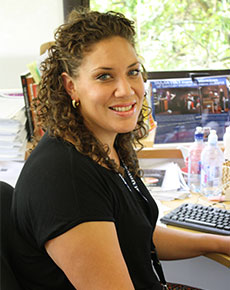Opinion: Rethink needed for Samoan language survival

While New Zealand celebrates Samoan Language Week from 24-30 May, we also need to think about how we can best ensure the survival of the language, says Salainaoloa Wilson, a PhD student in the School Social Sciences and Public Policy at Auckland University of Technology.
Language shifts are seen across many cultures, but language decline is most common in migrant populations, notably those with large numbers living outside of their homeland, like Samoans
Samoans are a fast-growing population and make up almost half of the total Pacific population in New Zealand. Broadly speaking, just over half of them speak the Samoan Language.*
But, less than half – 36.1% – of New Zealand-born Samoans can speak the Samoan language. This is an issue that must be addressed.
Language conundrum for New Zealand born Samoans
Many New Zealand-born Samoans believe that even if they do not speak Samoan in New Zealand, they will always have their homeland to fall back on as a place where they can speak and/or learn the language.
Yet, there are signs of language shift and decline happening in Samoa itself, with English increasingly being spoken, particularly in the urban areas. This is putting the Samoan Mother tongue at real risk.
We also see many New Zealand-born Samoans placing greater status on the English language – from an academic and career perspective – at the risk of losing their Samoan language. While most Samoans place high intrinsic value on their language, its usefulness in employment for example is less highly rated. This conundrum may be the tipping point for Samoan language maintenance in New Zealand.
Family key to keeping language alive
My parents – a Samoan mother and New Zealand European father, both of whom are fluent in Samoan – subscribe strongly to the age-old Samoan belief that parents are your first teachers.
I grew up with Samoan as my first language, but did not realise until much later that it was a deliberate attempt by both my parents to ensure that I grew up to be a fully bilingual New Zealand-born Samoan.
There is undeniably a strong need to raise the issue of Samoan language maintenance for discussion at a national policy level.
But, if we are to be fully successful in ensuring revival and maintenance of our Pacific languages, speaking the language at home should be the first step.
A focus on language in the home would give such policy greater chance of being successful. Samoan language teaching and learning in schools would then supplement at-home efforts to maintain the Samoan language, as well as providing the opportunity for those who do not have as much contact with the language at home to learn it.
Bilingualism opens world of benefits
Research worldwide shows that bilingualism results in cognitive, social, and educational advantages.
Bilingual students tend to outperform their monolingual peers in key cognitive tasks. Bilingual people can communicate with a broader range of people within families and communities, across generations, and in a variety of social contexts. In addition, being proficient in two languages does make it easier to learn additional languages.
Bilingual people can also bring their additional linguistic skills to the employment market – skills that are increasingly important in a globalised world.
When bilingual learners also become bi-literate – having the ability to read and write fluently in two languages as well speaking fluently – they are known to achieve extremely well in educational pursuits, often better than their monolingual peers.
Most importantly, knowing your mother tongue, and constantly and deliberately enriching it, is a marker of identity.
Community and family-based actions at the very start will strengthen the case for national policy support, and ensure the revival, and survival of the language into the next generation.
* Population statistics from 2013 Census, Statistics New Zealand. For more information, click here.